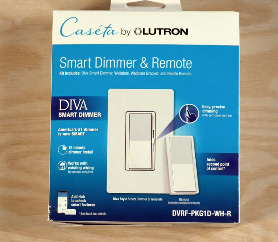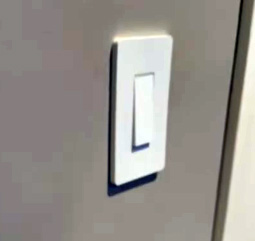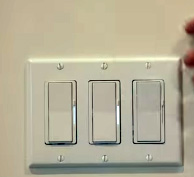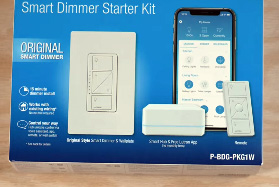I’ve spent years tinkering with smart home tech, and choosing between Lutron and Kasa for lighting control was a journey worth sharing. Both brands promise seamless automation, but they cater to different needs and budgets. In this article, I’ll walk you through my experience with their features, installation, and performance, weighing pros and cons to help you decide which system fits your home. Whether you’re a tech enthusiast or a casual user, I’ll break it down to make your choice easier.
Comparison Table: Lutron Vs. Kasa
| Feature | Lutron | Kasa |
| Price Range | $60–$150 per switch | $15–$50 per switch |
| Hub Requirement | Yes (Lutron Bridge for most) | No (Wi-Fi-based) |
| Installation | Professional or DIY (neutral wire) | DIY (neutral wire often required) |
| App Experience | Polished, reliable | User-friendly, occasional glitches |
| Voice Assistant Support | Alexa, Google, Siri, others | Alexa, Google |
| Dimming Capabilities | Advanced, smooth | Basic to moderate |
| Smart Home Integration | Extensive (HomeKit, SmartThings) | Moderate (IFTTT, Alexa, Google) |
| Design Options | Premium, customizable | Functional, limited styles |
| Energy Monitoring | Limited models | Select models |
| Reliability | High, enterprise-grade | Good, occasional connectivity issues |
My Journey With Smart Lighting

When I first decided to upgrade my home’s lighting, I wanted something that felt futuristic yet practical. I’d heard about Lutron and Kasa through friends and online forums, and both seemed promising. Lutron’s reputation for high-end, reliable systems intrigued me, while Kasa’s affordability and simplicity caught my eye. I ended up testing both brands in my home—a mix of a living room, bedroom, and kitchen setup—to see which delivered the best experience. Here’s what I learned.
Understanding Lutron: The Premium Choice
Lutron has been a name in lighting control for decades, and their smart switches—like the Caséta and Maestro lines—carry that legacy. I installed the Lutron Caséta Dimmer Switch in my living room, and the first thing I noticed was the quality. The switch felt solid, with a sleek design that blended into my wall. The tactile buttons gave a satisfying click, and the LED indicators were subtle yet clear.
Key Features Of Lutron
Lutron’s Caséta system requires a Lutron Smart Bridge for full functionality, which connects to your Wi-Fi router. This hub enables remote control, scheduling, and integration with smart home platforms like Apple HomeKit, Amazon Alexa, Google Assistant, and Samsung SmartThings. I set up scenes like “Movie Night,” dimming lights to 20% with a single tap, and it worked flawlessly every time.
Read More: My Thought on Blink Vs. Kasa Indoor Security Camera
The dimming capabilities are a standout. Lutron’s switches offer smooth, flicker-free dimming, which is perfect for creating ambiance. I also appreciated the geofencing feature, which turned lights on when I arrived home. For advanced users, Lutron’s compatibility with professional systems like Control4 makes it a favorite for custom installs.
Pros Of Lutron
- Reliability: In months of use, I never experienced a dropped connection or glitch.
- Premium Design: The switches look and feel high-end, with customizable faceplates.
- Advanced Dimming: Perfect for fine-tuning lighting levels.
- Broad Compatibility: Works with nearly every major smart home platform.
- Longevity: Lutron’s reputation suggests these switches will last years.
Cons Of Lutron

- Pricey: At $60–$150 per switch, plus $70 for the Smart Bridge, it’s a big investment.
- Hub Dependency: Without the bridge, functionality is limited.
- Installation Complexity: Some models require a neutral wire, and professional installation may be needed for older homes.
- Learning Curve: The app, while polished, has more settings than a beginner might need.
Exploring Kasa: The Budget-Friendly Contender
Kasa, made by TP-Link, is known for affordable smart home devices. I installed the Kasa Smart Dimmer Switch (HS220) in my kitchen and a basic Kasa Smart Switch (HS200) in my bedroom. Right out of the box, I was impressed by how easy they were to set up. Unlike Lutron, Kasa switches connect directly to your Wi-Fi, so no hub is required. This simplicity made them appealing for a quick smart home upgrade.
Key Features Of Kasa
The Kasa app is straightforward, letting me control lights, set schedules, and create timers with minimal effort. I programmed my kitchen lights to turn on at 7 a.m. and off at midnight, which worked most of the time. Kasa supports Alexa and Google Assistant, so I could say, “Alexa, dim the kitchen lights to 50%,” and it responded instantly. Some Kasa switches, like the HS220, offer dimming, though it’s not as refined as Lutron’s. Select models also include energy monitoring, which helped me track my kitchen’s lighting usage.
Kasa’s “Away Mode” randomly turns lights on and off to simulate occupancy, a feature I found handy during vacations. The switches are functional, with a clean but basic design that doesn’t stand out like Lutron’s.
Pros Of Kasa
- Affordable: At $15–$50 per switch, it’s wallet-friendly.
- No Hub Required: Direct Wi-Fi connection simplifies setup.
- Easy Installation: Most models are DIY-friendly, though a neutral wire is often needed.
- Energy Monitoring: Available on select models, great for tracking usage.
- User-Friendly App: Intuitive for beginners, with quick setup.
Cons Of Kasa

- Limited Dimming: Dimming feels less smooth, with occasional flickering at low levels.
- Connectivity Issues: I experienced occasional Wi-Fi dropouts, requiring a router reboot.
- Basic Design: Functional but lacks the premium aesthetic of Lutron.
- Fewer Integrations: No HomeKit support, limiting Apple ecosystem users.
- Reliability Concerns: Some users report long-term durability issues.
Installation: My Hands-On Experience
Installing both systems gave me insight into their practical differences. For Lutron, I tackled the Caséta Dimmer Switch in my living room. My home, built in the 1990s, has neutral wires, so installation was straightforward with the help of YouTube tutorials. However, the need for the Lutron Smart Bridge added a step—plugging it into my router and pairing it via the app. Total setup time was about 45 minutes, including wiring and app configuration.
Kasa’s HS220 in my kitchen was even simpler. Since it doesn’t require a hub, I wired the switch, connected it to my Wi-Fi, and had it running in under 20 minutes. Both systems require basic electrical knowledge, so if you’re not comfortable with wiring, a professional electrician is a smart call. Older homes without neutral wires may pose challenges for both brands, though Lutron offers some non-neutral options.
Performance And Reliability: Real-World Testing
In daily use, Lutron’s reliability shone. The Caséta switches responded instantly to app commands, voice assistants, and physical presses. The Smart Bridge ensured stable connections, even when my Wi-Fi was spotty. I tested the geofencing feature by driving a mile away, and my lights turned on right as I pulled into the driveway—impressive.
Kasa performed well but wasn’t flawless. About once a month, the HS220 lost connection, requiring a router restart. The app occasionally lagged, especially when scheduling complex routines. However, for basic on/off and dimming, Kasa was reliable enough for the price. Voice control with Alexa worked seamlessly, though I missed HomeKit support for my iPhone.
Smart Home Integration: Connecting The Dots
If you’re building a smart home, integration matters. Lutron’s compatibility with HomeKit, SmartThings, and even high-end systems like Control4 made it a powerhouse. I paired my Caséta switches with HomeKit, creating automations like “Good Night,” which turned off all lights and locked my smart door. The Lutron app’s scene customization was intuitive, letting me save multiple lighting presets.
Kasa’s integrations are narrower. It works well with Alexa and Google Assistant, and IFTTT support adds flexibility for custom automations. However, the lack of HomeKit support was a letdown for my Apple-centric setup. Kasa’s app is solid for basic tasks but lacks the depth of Lutron’s for complex routines.
Design And Aesthetics: Form Meets Function
Lutron’s switches look like they belong in a high-end home. The Caséta’s customizable faceplates let me match my wall color, and the soft-glow LEDs added a modern touch. Kasa’s switches, while clean, felt utilitarian. They’re white, rectangular, and functional, but they don’t elevate a room’s aesthetic like Lutron’s. If design matters to you, Lutron is the clear winner.
Cost Considerations: Budget Vs. Investment
Price was a major factor in my decision. Lutron’s Caséta Dimmer Switch cost me $100, plus $70 for the Smart Bridge, totaling $170 for a single room. Scaling that to my entire home would cost thousands. Kasa’s HS220 was $25, and with no hub, I could outfit multiple rooms for under $200. For budget-conscious users, Kasa is hard to beat. But Lutron’s durability and features justify the cost if you’re in it for the long haul.
Energy Efficiency: Tracking Usage
Energy monitoring was a bonus I didn’t expect to care about. Kasa’s HS220 let me track my kitchen lights’ energy use, revealing that my old bulbs were costing me more than I thought. This prompted me to switch to LEDs, saving a few bucks monthly. Lutron offers energy monitoring on select models, but it’s less common. If sustainability is a priority, Kasa has a slight edge here.
Use Cases: Which Fits Your Lifestyle?

Your choice depends on your needs. If you’re a tech enthusiast with a smart home ecosystem, Lutron’s reliability and integrations make it ideal. It’s perfect for large homes or those planning extensive automations. Kasa suits renters, budget-conscious users, or smaller setups where simplicity is key. I found Kasa great for my kitchen, where I needed basic scheduling, but Lutron’s advanced features transformed my living room into a smart haven.
My Verdict: Balancing Value And Performance
After months of testing, I lean toward Lutron for its polish and reliability, but Kasa’s affordability makes it a strong contender. If you can afford the upfront cost and want a premium experience, Lutron is worth it. If you’re dipping your toes into smart lighting or need a budget-friendly solution, Kasa gets the job done. Consider your home’s wiring, smart home setup, and long-term goals before deciding.
Read More: My Thought on Blink Vs. Kasa Indoor Security Camera
Frequently Asked Questions (Faq)
Nothing universally beats Lutron, but brands like Leviton or Philips Hue offer similar reliability for specific use cases.
Yes, Kasa is reliable for budget-friendly smart home devices, though it may lack the polish of premium brands.
Kasa, Leviton, or Wemo smart switches are solid alternatives, offering similar features at lower costs.
Kasa light switches are made by TP-Link, a well-known brand in networking and smart home tech.
Conclusion: Your Smart Lighting Journey
You’re standing at a crossroads, deciding how to light up your home smarter. I’ve been there, weighing Lutron’s premium performance against Kasa’s affordability. Both have their strengths, and your choice hinges on what you value—reliability and integrations with Lutron, or simplicity and savings with Kasa. Test one switch before committing to a whole-home setup, and you’ll find the perfect fit for your lifestyle. Let me know if you need more guidance—I’m happy to help you shine.
